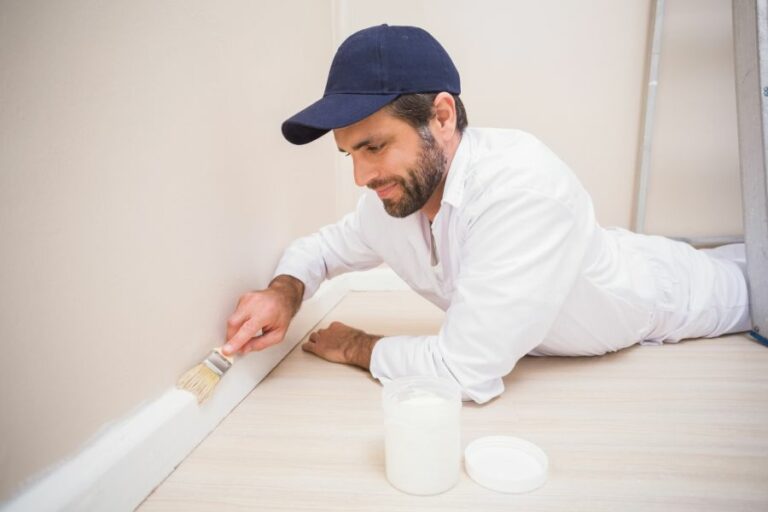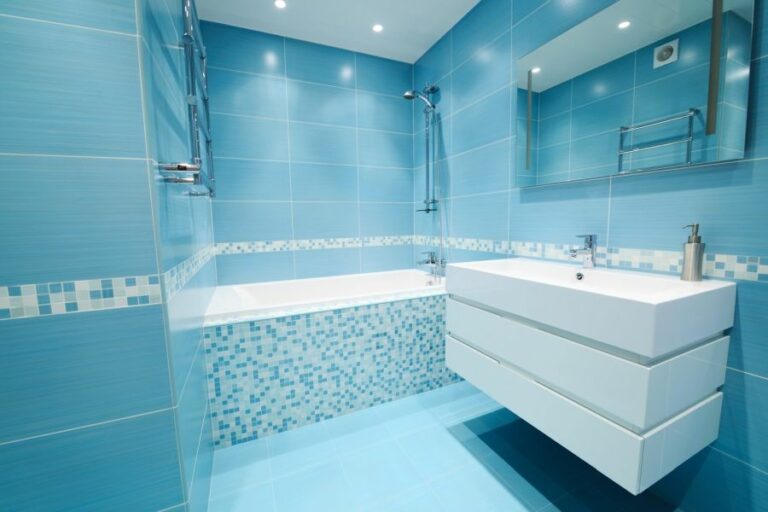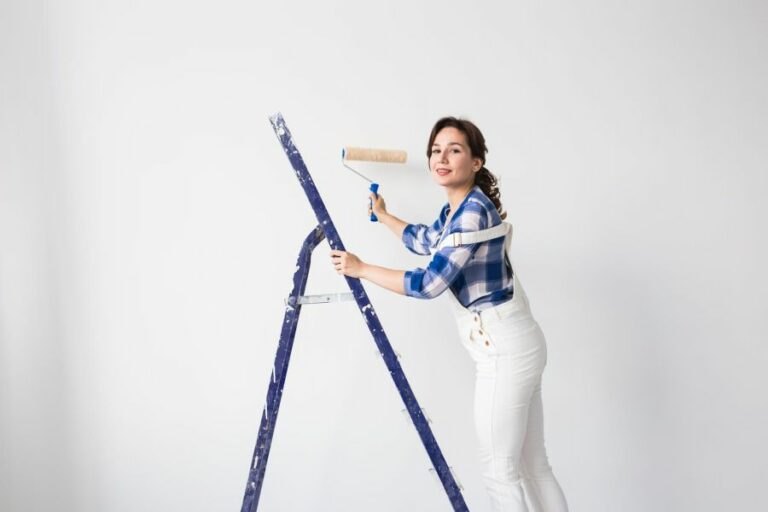Preparatory Surface Evaluation Methods. What Pros Say
As we dive into the world of preparatory surface evaluation methods, you can be confident that we have the expertise and experience to guide you through this essential process. Navigating the various techniques and approaches might seem daunting at first, but we are here to provide you with all the knowledge and support you need.
Preparatory surface evaluation methods:
Preparatory surface evaluation methods are vital for assessing material and component quality in various industries. These methods include visual inspection, profilometry, ultrasonic testing, destructive testing, and surface preparation techniques. Employing these approaches collectively ensures a comprehensive understanding of a surface’s properties, promoting continuous improvement of evaluation procedures.

Discover the techniques and procedures for effective surface evaluation before tackling any project. Dive into the world of preparatory surface examination methods and their significance in achieving optimal results. Read on to unravel the secrets of surface assessment experts!
Contents
- 1 Methods for Assessing Surface Preparation
- 1.1 • Visual Inspection: The First Line of Surface Assessment
- 1.2 • Profilometry: Quantifying Surface Topography
- 1.3 • Ultrasonic Testing: Evaluating Subsurface Imperfections
- 1.4 • Destructive Testing: Gathering Detailed Material Information
- 1.5 • Surface Preparation Techniques for Enhanced Evaluation
- 1.6 • Comparing Results and Refining Evaluation Procedures
- 2 Techniques for Surface Preparation: An Overview
- 3 Popular Surface Preparation Methods Explained
- 4 Top 4 Approaches for Surface Adhesive Preparation
- 5 Alternative Ship Surface Preparation Techniques for Painting
Methods for Assessing Surface Preparation
Surface evaluation is a crucial aspect of many industrial processes, particularly in the fields of manufacturing, materials science, and engineering. In order to ensure the quality and integrity of the surface, various preparatory surface evaluation methods are employed.
• Visual Inspection: The First Line of Surface Assessment
The most basic yet indispensable method in preparatory surface evaluation is a visual inspection. This approach can be conducted by human inspectors or automated systems.
By carefully observing the surface in question, a wide array of defects and surface irregularities can be identified, allowing for targeted remedial actions. While visual inspection can be limited by the capabilities of the human eye or the technology utilized, it remains an essential preliminary step.
Recommendation: As the first line of the assessment, a visual inspection should be coupled with additional methods for comprehensive surface analysis.
• Profilometry: Quantifying Surface Topography
Profilometry refers to the quantitative characterization of a surface’s topography. Both contact and non-contact profilometry techniques exist, including stylus profilometry, optical profilometry, and atomic force microscopy (AFM).
These provide detailed measurements of the surface’s roughness, waviness, and dimensional characteristics. Profilometry’s ability to quantify surface characteristics grants a higher level of insight, facilitating comparative studies and analysis of changes over time.
Recommendation: Consider the scale of surface features and the desired sensitivity to select the appropriate profilometry technique.
• Ultrasonic Testing: Evaluating Subsurface Imperfections
Ultrasonic testing involves the use of high-frequency sound waves to evaluate a material’s subsurface characteristics.
By generating an ultrasonic pulse that propagates through the material and reflects off internal features, this non-destructive technique permits the detection of inclusions, voids, and cracks beneath the surface.
Ultrasonic testing is particularly useful for inspecting the integrity of welds or bonded joints. Additionally, this method can measure material thickness, allowing for the identification of corrosion or erosion-induced losses.
Recommendation: Utilize ultrasonic testing for applications requiring subsurface insight or thickness evaluation.
• Destructive Testing: Gathering Detailed Material Information
Since non-destructive methods may not provide sufficient information in certain situations, destructive testing can be employed to obtain more comprehensive data on surface and material properties.
Destructive testing encompasses techniques such as tensile testing, hardness testing, and fatigue testing, which provide vital information on a material’s mechanical properties. While this information can be invaluable, it requires the sacrifice of samples and added testing costs.
Recommendation: Determine the necessity of destructive testing based on specific goals, available resources, and potential benefits.
• Surface Preparation Techniques for Enhanced Evaluation
In certain cases, surface preparation is needed prior to evaluation. For instance, contaminants and coatings may obscure surface defects or generate false readings in quantitative analysis.
Surface preparation methods, such as grinding, polishing, or etching, can be employed to expose the true nature of the surface being assessed.
Recommendation: Choose the appropriate surface preparation technique based on the material, desired evaluation method, and potential impact on surface characteristics.
• Comparing Results and Refining Evaluation Procedures
Upon completion of the surface evaluation, it is important to compare the results gathered from different methods. This comparative analysis promotes a deeper understanding of the surface’s properties and relationships between various characteristics.
Moreover, it allows for the identification of areas requiring improvement, leading to the refinement of evaluation procedures and the development of more accurate, efficient, and effective techniques.
Recommendation: Pursue regular comparative analysis and strive for continuous improvement of surface evaluation procedures.
In conclusion, preparatory surface evaluation methods represent a fundamental aspect of material and component assessment across various industries.
By employing a combination of visual inspection, profilometry, ultrasonic testing, destructive tests, and surface preparation techniques, a comprehensive understanding of a surface’s characteristics can be achieved.
Regularly comparing results and refining evaluation procedures will ensure the ongoing improvement of such critical methods.
Techniques for Surface Preparation: An Overview
Surface preparation is a crucial process in maintaining and improving the performance of various materials and surfaces. Proper surface preparation enhances the adhesion of coatings, paints, and sealants, ensuring a durable and long-lasting finish.
• Mechanical Surface Preparation Methods
– Abrasive Blasting
Abrasive blasting, also known as sandblasting, is a widely used method for removing rust, scale, and old coatings from surfaces. This method utilizes high-pressure air mixed with abrasive materials, such as sand, steel grit, or glass beads, to clean and roughen targeted surfaces.
Abrasive blasting is a versatile surface preparation method suitable for various materials, including metal, concrete, and wood.
– Grinding
Grinding is another mechanical method used to remove materials and create a smooth surface. This technique uses electric or pneumatic grinders fitted with abrasive wheels or discs to remove rust, scale, and old coatings.
Grinding is best suited for small areas or hard-to-reach locations where other methods may not be practical.
– Shot Peening
Shot peening is a surface preparation method mainly used for metals to improve their fatigue strength and resistance to stress corrosion cracking. This process involves bombarding the surface with small, spherical media called shots.
The impact energy of the shot imparts compressive residual stresses on the surface, enhancing its mechanical properties.
– High-Pressure Water Cleaning
High-pressure water cleaning, also known as hydro-blasting or water jetting, is an eco-friendly and highly effective method for removing dirt, grease, and old coatings from surfaces. This technique uses high-pressure water jets with or without abrasive additives to clean and prepare the surface.
High-pressure water cleaning is suitable for various applications such as concrete, steel, and masonry.
• Chemical Surface Preparation Methods
– Solvent Cleaning
Solvent cleaning is a surface preparation method that utilizes organic solvents to remove contaminants, such as oil, grease, and wax, from surfaces. This technique is vital in ensuring optimal adhesion of coatings, paints, and sealants.
A variety of solvents, including acetone, methyl ethyl ketone, and trichloroethylene, can be used for this purpose.
– Acid Etching
Acid etching is a chemical surface preparation method employed to create a rough surface profile, particularly on concrete and masonry surfaces. This technique involves applying a diluted acid solution to the surface, which reacts with the material and dissolves the top layer.
The acid is then neutralized, and the surface is thoroughly rinsed with water. This process provides a better surface profile for improved coating adhesion.
– Alkaline Cleaning
Alkaline cleaning is a chemical surface preparation method that uses alkaline-based cleaners, such as sodium hydroxide and potassium hydroxide, to remove dirt, grease, and oil from surfaces.
Alkaline cleaning is especially effective for degreasing metal surfaces before painting or coating application. Proper rinsing is required after alkaline cleaning to ensure a contaminant-free surface.
• Surface Preparation Recommendations
- Always consult the material data sheet, coating manufacturer’s guidelines, and industry standards to determine the appropriate surface preparation method for your specific application.
- Consider the properties of the surface material and the desired finish when selecting a surface preparation method.
- Properly train and equip operators to ensure safe and efficient implementation of surface preparation techniques.
- When using chemicals for surface preparation, ensure proper personal protective equipment (PPE) and proper disposal methods.
- Conduct regular maintenance and inspection of equipment used for surface preparation to ensure optimal performance and safety.
In conclusion, surface preparation is a critical factor in achieving a durable and high-quality finish on a wide array of materials and surfaces.
Familiarizing oneself with the various surface preparation methods and their applications will ensure a successful outcome for your project and an extended service life for your materials and coatings.
Popular Surface Preparation Methods Explained
Surface preparation is a crucial step in ensuring the success of any coating or bonding process. Among the numerous surface preparation techniques, abrasive blasting is the most common and widely applicable method.
This technique is employed across different sectors, such as automotive, construction, manufacturing, and marine, to name a few.
• Abrasive Blasting: An Overview
Abrasive blasting, also referred to as sandblasting or grit blasting, is a process that involves projecting abrasive particles at high velocity onto a surface to remove unwanted contamination, rust, and old paint and to create a specific profile.
The primary goal of abrasive blasting is to clean and roughen the surface, thereby achieving improved adhesion of paint, coatings, and other materials.
The abrasive materials used in this process could be of various types, including sand, steel shot, steel grit, plastic beads, glass beads, and even walnut shells. The choice of abrasive depends on various factors, such as the nature of the surface material, the desired finish, and environmental concerns.
– Types of Abrasive Blasting Processes
There are several variations in abrasive blasting processes that cater to specific needs and requirements. These include:
- Dry Abrasive Blasting: The most widespread form of abrasive blasting, it uses high-pressure compressed air to propel abrasive particles onto the surface.
- Wet Abrasive Blasting: Incorporates water into the blasting process, reducing dust emissions and minimizing heat generation, which can be beneficial for delicate surfaces.
- Vacuum Abrasive Blasting: Also known as dust-free or dustless blasting, this process employs a vacuum system to collect spent abrasives and contaminants, preventing them from dispersing into the surrounding environment.
- Micro-Abrasive Blasting: Designed for precision work, this technique employs very fine abrasives and specialized nozzles, making it suitable for tasks such as cleaning intricate electronic components or restoring delicate artifacts.
– Selecting the Appropriate Abrasive Blasting Method
As each abrasive blasting process serves different purposes, it is essential to choose the appropriate method based on various factors, such as:
- Material of the surface: The hardness and sensitivity of the surface must be taken into account, so as not to damage the substrate.
- Desired surface profile: The coarseness or smoothness of the required finish plays a significant role in determining the abrasive type and blasting method.
- Budget constraints: Different abrasive blasting methods have varying costs, so it is crucial to consider your budget while deciding on the most appropriate process.
- Environmental concerns: Since some blasting processes can generate airborne dust and lead to contamination, it is vital to select a method that can address specific environmental concerns.
I recommend consulting with an industry expert, as they can guide you in selecting the most appropriate abrasive blasting process suitable for your specific requirements.
• Advantages of Abrasive Blasting
The widespread popularity of abrasive blasting can be attributed to its numerous benefits, which include:
- Efficiency: The process is quick and can significantly speed up surface preparation, ultimately saving time and labor costs.
- Versatility: It can be used across different sectors and applied to various surfaces, such as metal, wood, stone, and concrete.
- Unparalleled results: The technique results in a clean, contaminant-free surface that promotes better adhesion of coatings and other materials.
- Adaptability: Many abrasive materials and blasting processes are available, accommodating specific needs and circumstances.
• Disadvantages of Abrasive Blasting
However, abrasive blasting is not without its drawbacks, which include:
- Potential health risks: Repeated exposure to airborne dust particles and abrasive materials may pose serious health risks to operators.
- Damage to the substrate: If not executed correctly, the process may damage the surface material, causing unintended results.
- Environmental pollution: Some techniques may generate excessive dust, posing environmental concerns.
To overcome these challenges, it is essential to adhere to recommended safety practices, employ proper equipment, and perform routine maintenance checks.
In conclusion, abrasive blasting is the most common and versatile surface preparation technique, offering numerous advantages while addressing specific application needs.
By selecting the appropriate abrasive material and method, this process can deliver efficient, accurate, and adaptable surface treatment solutions.
Top 4 Approaches for Surface Adhesive Preparation
Surface preparation is crucial to achieving an efficient and long-lasting bond with adhesives.
– Cleaning: Removing Contaminants and Debris
I recommend cleaning the surface thoroughly to remove any contaminants, such as dirt, dust, grease, or moisture, that could interfere with the adhesion process. There are several ways to clean a surface, including:
- Wiping with a clean, lint-free cloth: Using a cloth can remove dust, dirt, and loose particles from the surface.
- Solvent cleaning: This method uses a solvent, such as isopropyl alcohol, to dissolve and remove grease, oil, and other residues.
- Vapor degreasing: A vapor degreasing machine uses solvent vapor to clean surfaces thoroughly.
To learn more about cleaning methods and recommendations, consult the 3M Guide to Surface Preparation.
– Roughening: Increasing Surface Area and Adhesion
One way to improve adhesion is by increasing the surface area through roughening. This process creates microscopic peaks and valleys on the surface, allowing the adhesive to establish a stronger mechanical bond. There are several roughening methods, including:
- Abrading: This technique involves using an abrasive material, such as sandpaper or a Scotch-Brite pad, to roughen the surface.
- Blasting: In this process, abrasives (e.g., sand, glass beads, aluminum oxide) are blasted onto the surface at high speed using specialized equipment.
- Etching: Chemical etchants (e.g., acids, alkalis) can be used to selectively dissolve areas on the surface and create a roughened texture.
– Chemical Treatment: Promoting Adhesive Bonding at the Molecular Level
A chemical treatment can modify the surface to promote adhesion at a molecular level. This step is crucial when bonding materials with low surface energy, such as plastics. There are several chemical treatment methods:
- Plasma treatment: In this method, a gas plasma is applied to the surface, causing reactions that increase the surface energy and improve adhesion.
- Corona treatment: This technique uses a high-voltage electric discharge to create a corona, which modifies the surface chemistry and enhances adhesion.
- Chemical etching: As mentioned in the roughening section, chemical etchants can also be used to modify the surface composition for improved bonding.
– Priming: Enhancing Adhesive Bond Strength and Durability
Priming is the process of applying a coating to the surface before the application of adhesive. Primers can help improve adhesive bond strength, prevent corrosion, or provide additional protection against environmental factors.
When selecting a primer, consider the adhesive type, materials being bonded, and the bonding environment. Some common types of primers include:
- Silane primers: These are often used on glass, ceramics, and some metals to promote adhesion and increase bond strength.
- Polymeric primers: These primers, typically comprised of a polymer and a solvent, are used on plastics, composites, and rubber materials.
- Metal primers: These are specifically designed for use on metal surfaces and often include corrosion inhibitors to protect against rust.
• Conclusion
In conclusion, achieving a strong and durable adhesive bond requires proper surface preparation. By employing the appropriate cleaning, roughening, chemical treatment, and priming technique, you can significantly improve the bonding performance of your adhesive.
Each method has its benefits and drawbacks, so carefully consider the materials, adhesive type, and environmental conditions when choosing a surface preparation method. Following these guidelines will help ensure a successful bonding outcome.
Alternative Ship Surface Preparation Techniques for Painting
Surface preparation is a crucial step in the overall maintenance and painting process in the maritime industry. It is of prime importance to ensure a proper foundation for paint application, preventing potential issues such as corrosion, flaking, and peeling.
• Abrasive Blasting
Abrasive blasting is a highly effective method for surface preparation, commonly used in the shipbuilding industry. It involves the use of high-pressure air or water to propel an abrasive material against the surface, which removes rust, old paint, and other contaminants efficiently.
There are various abrasive blasting techniques, including:
- Dry abrasive blasting
- Wet abrasive blasting
- Slurry blasting
- Ultra-high pressure water blasting
I recommend dry abrasive blasting for indoor and controlled working environments, while wet and slurry blasting methods are more suitable for outdoor use to minimize dust and environmental concerns.
• Hand and Power Tool Cleaning
In situations where abrasive blasting is not feasible or practical, hand and power tool cleaning methods can be employed. These methods involve the use of hand tools such as scrapers, wire brushes, and sandpaper, or power tools such as sanders, grinders, or needle guns.
While these methods may be more labor-intensive and time-consuming, they can still effectively remove rust, old paint, and other contaminants from surfaces.
I recommend using power tools for larger surface areas and hand tools for more intricate or harder-to-reach areas.
• Chemical Stripping and Cleaning
Chemical stripping and cleaning methods make use of specialized chemicals and solvents to break down and remove old paint, grease, dirt, and other contaminants from surfaces.
They can be applied using brushes, rollers, or sprayers, followed by thorough washing and rinsing to ensure that all traces of the chemicals have been removed before painting.
It is crucial to choose the appropriate chemical stripper based on the type of surface and the type and condition of the existing coating.
I recommend chemical stripping for removing tightly adhering old paint, allowing for minimal mechanical or abrasive disturbance of the underlying surface.
• High-Pressure Washing
High-pressure washing is another method for surface preparation that uses water at high pressure to clean and remove contaminants from surfaces.
It is often used in combination with other preparation methods, such as abrasive blasting, to ensure thorough cleaning and to minimize the risk of cross-contamination. High-pressure washing can also help to identify any remaining defects on the surface that may require further attention.
I recommend using high-pressure washing after abrasive blasting or chemical cleaning to remove any remaining loose particles or contaminants.
• Surface Profiling and Inspection
Once the cleaning and preparation process is complete, it is essential to inspect and profile the surface before applying paint. The surface profile is the measure of the surface’s roughness or texture, which can impact the adhesion and performance of the coating.
Surface profiling can be accomplished using various methods, such as replica tape or by visual comparison to standardized reference photographs.
I recommend using a combination of visual inspection and surface profiling methods to ensure that the surface is clean and adequately prepared for painting.
• Conclusion
Proper surface preparation is critical for achieving a successful and durable paint application on ships.
By employing one or more of the methods mentioned above, such as abrasive blasting, chemical stripping, or high-pressure washing, ship owners and maintenance professionals can ensure that surfaces are clean, free of contaminants, and adequately profiled for the paint to adhere and perform optimally.
Always follow the paint manufacturer’s recommendations for surface preparation and application to ensure the best results.
Method | Description |
|---|---|
Abrasive blasting | Using high-pressure air mixed with abrasive materials to clean and roughen a surface. |
Hand and power tool cleaning | Using hand tools like wire brushes and scrapers or power tools like grinders to remove rust, scale, and old paint. |
High-pressure water jetting | Using high-pressure water spray to remove dirt, loose paint, and other contaminants from the surface. |
Chemical cleaning | Applying chemical agents such as paint removers or rust converters to remove old paint, rust and other contaminants. |
Ultra-high-pressure hydroblasting | Using water pressure above 30,000 psi to remove coatings, rust and other contaminants from the surface, while leaving the surface profile intact. |
Slurry blasting | Combining abrasive blasting with high-pressure water jetting to create a slurry that cleans and prepares the surface. |







